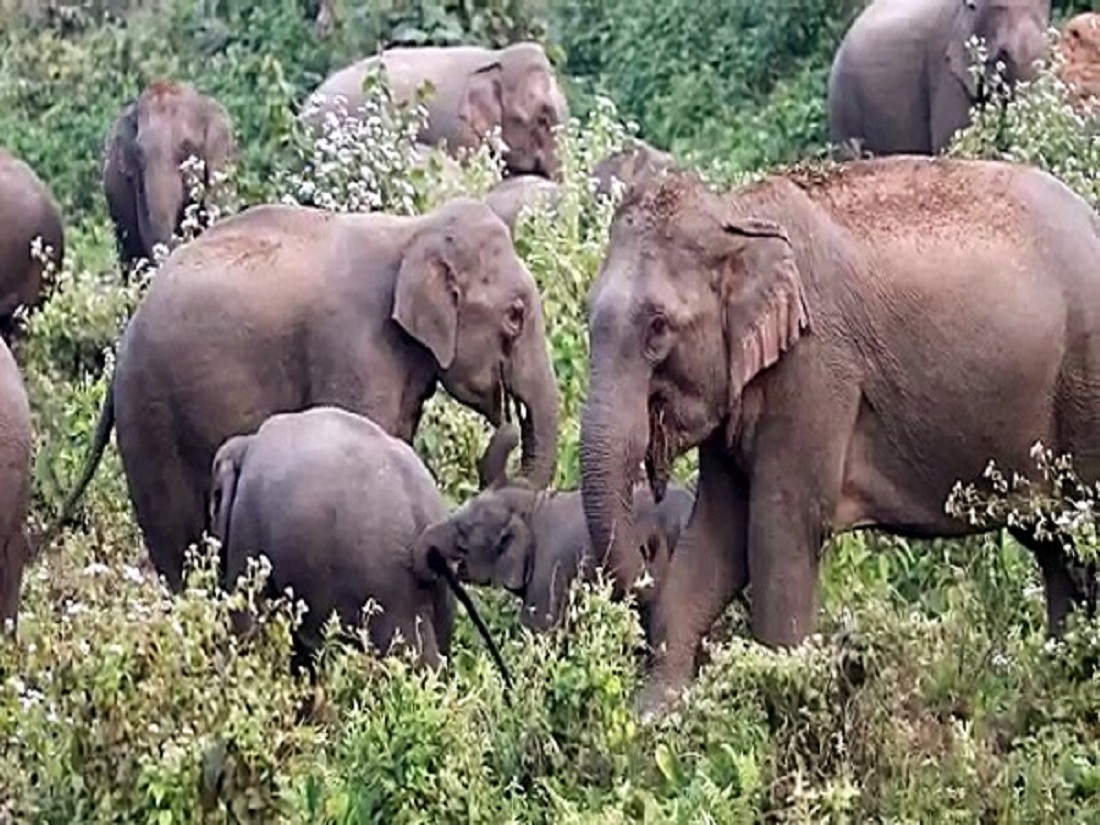Rapid economic and population growth in south Bengal have significantly heightened pressures on wildlife resources and their habitats.
As human settlements continue to encroach on wildlife territories, inevitable conflicts have arisen between humans and elephants, particularly in the high-density agricultural landscape. Addressing these conflicts is now crucial to protect both farmers and their lands while mitigating human impacts on elephant habitats.
Advertisement
Historically, elephants became rare in large swathes of south Bengal during the 18th century due to forest degradation and limited coppice sal forest coverage. Since the 1950s, however, elephants have expanded their range from neighbouring Jharkhand, especially into south Bengal’s fragmented forests dominated by sal trees. This expansion has exacerbated human-elephant conflicts, first reported in 1987. To manage and coexist with elephants in this human-dominated landscape, it is essential to understand the patterns of their range expansion and its consequences for both humans and elephants.
From the 1950s to 2010-2018, elephants’ range in south Bengal ballooned from approximately 1,200 sqkm to about 13,200 sqkm. One major driver of this expansion is the disturbance in the Dalma Wildlife Sanctuary and adjoining areas in Jharkhand’s Singhbhum district, where iron ore mining has disrupted the ecological balance, prompting elephants to seek new habitats.
Human-elephant conflict is a significant conservation issue for Asian elephants (Elephas Maximus), posing environmental and socio economic challenges in countries where they range. A recent survey of 680 households conducted by Soumen Bisui, a PhD scholar at the Research Centre in Natural and Applied Science of Raja Narendralal Khan Women’s College under Vidyasagar University, sheds light on the direct impacts of these conflicts on the socioeconomic status and livelihoods of people in four forest divisions: Rupnarayan, Midnapore, Kharagpur, and Jhargram. This research, part of Bisui’s PhD thesis on “Forest Dynamic and Ecosystem Services for Sustainable Rural Livelihood Study from parts of Junglemahal districts, West Bengal,” supervised by professor Pravat Kumar Shit, has been conducted over the past three years.
The study highlights that habitat fragmentation affects ecological patterns and processes by increasing the number of forest patches, reducing patch sizes, and disrupting connectivity within the ecological network. Forest cover remains the primary determinant of elephant distribution, making the understanding of forest loss and fragmentation crucial for elephant conservation. The conversion of forest fringe areas into agricultural land and the development of new water bodies have made these areas attractive to elephants, prompting them to settle permanently in South Bengal.
The human-wildlife conflicts are deeply rooted in the social ecology of the region. With food and water becoming scarce in the jungles, elephant herds are increasingly foraging in agricultural fields. “We’re seeing the elephant in the room,” remarked Manju Mahato, a 50-year-old resident of Chilgora village.
Bisui’s survey revealed that more than 58 hectares of crops were destroyed by elephants in a single year across the surveyed households. This destruction led over 540 farmers to submit compensation claims to the forest department. However, more than 79 per cent reported not receiving timely or adequate compensation. Prasenjit Hemram from Baghghara village, who lost a bigha of produce to elephants, expressed little hope of being compensated. Of the 680 households surveyed, 540 experienced annual losses of food and cash crops, and 12 households had been attacked by elephants in the past three years. Farmers reported that elephants consume half of their harvested rice, leading to a declining interest in paddy cultivation.
Due to frequent elephant raids, only 8 per cent of households have shifted to alternative farming practices. Some farmers, like Dukhun Mahato from Nayagram village, have begun cultivating crops such as bitter gourd and sesame, which are not favoured by elephants. Professor Shit explained that these changes in land use practices are significantly altering the social and economic fabric of the region. The increasing number of elephants and the scarcity of forest food have drastically changed the lives and livelihoods of the people in Junglemahal, forcing them to adapt to alternative farming methods.
The escalating human-elephant conflict in south Bengal underscores the urgent need for effective management strategies to ensure the coexistence of humans and elephants. As farmers navigate these challenging circumstances, the balance between development and wildlife conservation remains a critical issue requiring immediate attention and action.











